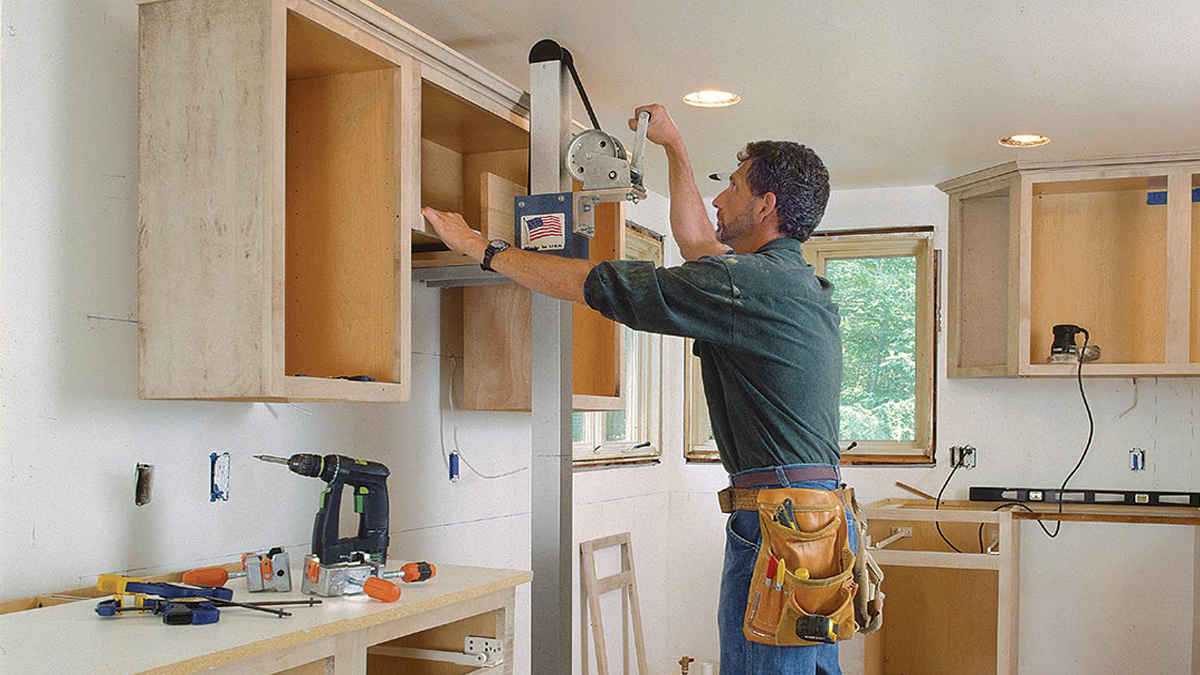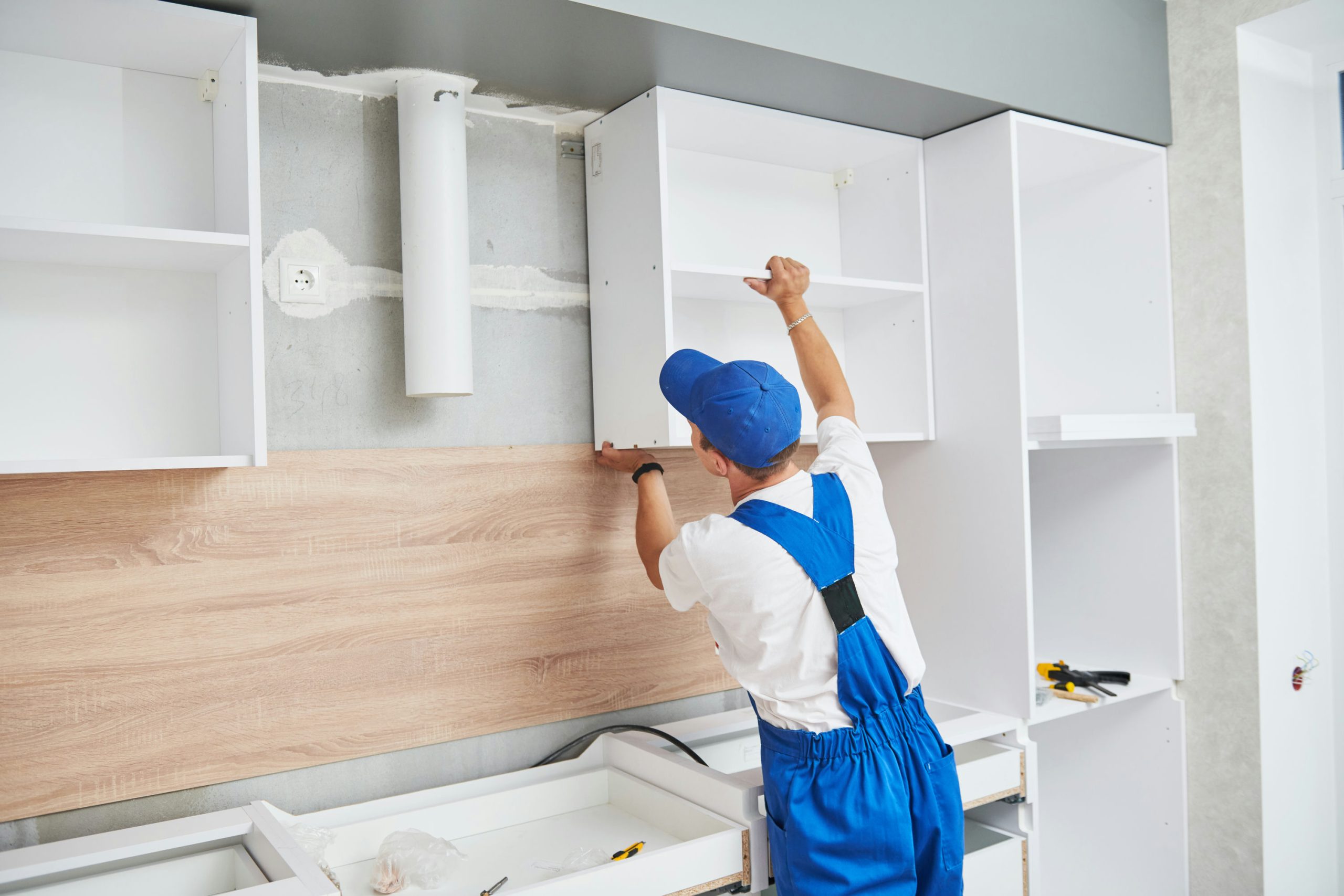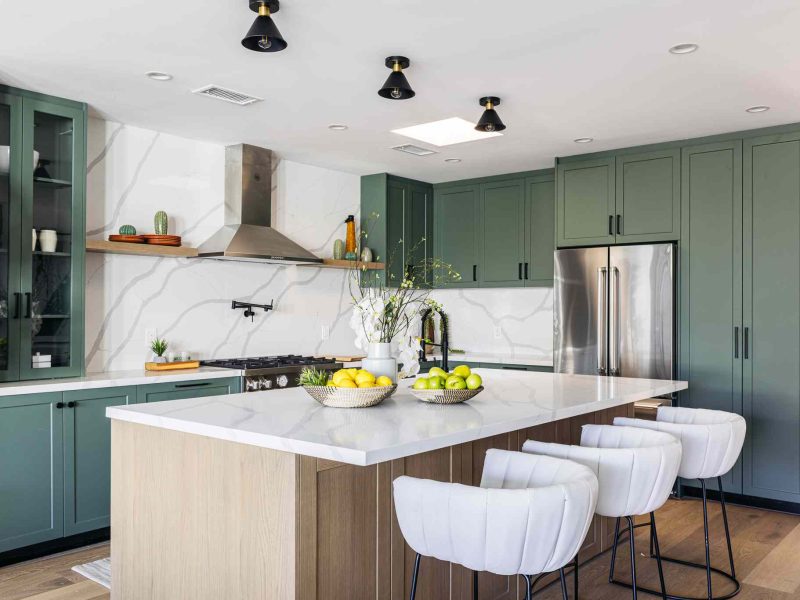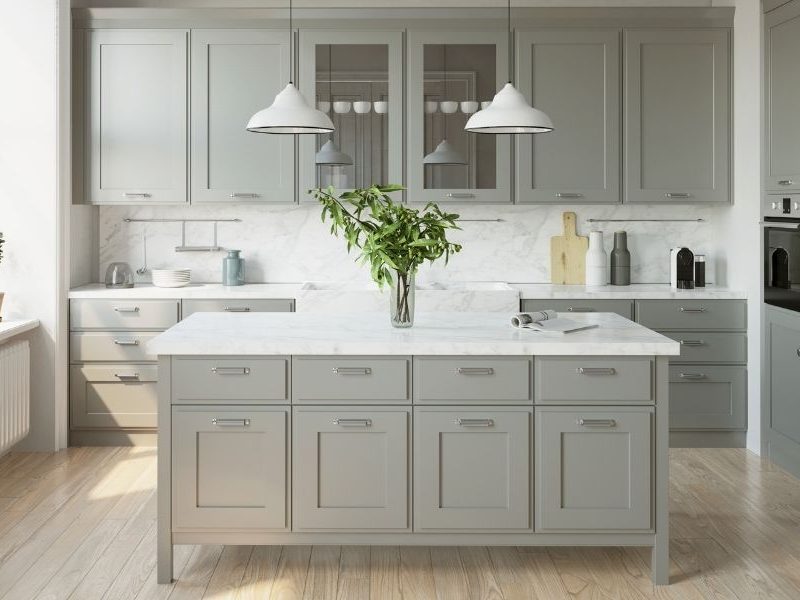Kitchen cabinet installation is an important skill to learn if you want to upgrade your kitchen. With the right tools and techniques, you can easily install your kitchen cabinets and make sure they are secure and look great. Following these tips will help you to ensure that your kitchen cabinet installation is successful.
Preparing the Area for Installation
Installing kitchen cabinets is a great way to breathe new life into a tired kitchen. However, before you begin, it’s important to make sure you have properly prepared the area for installation. This includes removing existing cabinetry, measuring and leveling the space, and ensuring that walls and floors are structurally sound.
Start by measuring the space to ensure that the cabinets will fit properly. This will help avoid any surprises when the new cabinets arrive. Once the measurements have been taken, remove any existing cabinetry and hardware. If there is any existing wall damage, you may need to repair this before installing the new cabinets. You should also check the walls and floor to make sure they are level and structurally sound. If they need to be leveled, use a level and shims to make sure that the new cabinets are properly secured.
Finally, take the time to clean the area and remove any grease, dirt, and debris. This will help ensure that the cabinets stick and adhere properly. Preparing the area for cabinet installation can take some time, but it will be worth it in the end. Taking the time to properly prepare the area will ensure that your kitchen cabinets are installed correctly and look great.
Measuring and Cutting the Cabinets
The key to properly installing kitchen cabinets is to ensure that they fit perfectly in your space. The first step to make sure that your cabinets are accurately sized is to measure the space where they will be installed. You should also measure the cabinets before you start cutting them to make sure that they will fit properly. To accurately measure the space, you should use a tape measure and mark the measurements on the wall. When cutting the cabinets, you should use a jigsaw with a fine-toothed blade to make sure that the cuts are precise. Make sure that you measure twice and cut once to ensure that the cabinet pieces fit correctly and are installed correctly. Additionally, make sure that you use safety precautions when cutting the cabinets to ensure that you don’t injure yourself. Once you have everything measured and cut, you can begin installing your cabinets.
Installing the Cabinets
Installing kitchen cabinets can be a daunting task for many homeowners, but with the right preparation and tools, it can be a relatively simple job. To begin, make sure you have all of the hardware, tools, and supplies necessary for the installation. This includes screws, wall anchors, a drill, screwdriver, level, saw, and clamps. Once everything is ready, it is time to start the installation.
To begin, you will need to measure the walls to determine where the cabinets can be placed. Additionally, you will need to ensure that the wall studs are properly located to provide extra support for the cabinets. Once you have found the right spot, you will need to locate the wall studs to hang the cabinets. Using a level, mark the wall studs and then use a drill to create pilot holes.
Next, you will need to assemble the cabinet boxes by following the manufacturer’s instructions. Make sure to use clamps to keep the boxes secure while assembling. Once the cabinet boxes are in place, you will need to attach them to the wall studs with screws. Finally, install the doors and drawers on the cabinets.
By following these steps, you can make sure that your kitchen cabinets are installed properly and securely. With the right preparation and tools, you can easily install your kitchen cabinets without any issues.

Finishing Touches and Sealing the Cabinets
Once the kitchen cabinet installation process is nearly finished, the last step is to make sure everything is sealed and secure. This is essential to ensure the cabinets remain in place and are properly affixed to the wall or floor. Additionally, sealing the cabinets protects against water damage and other potential problems that can arise from leaving them unsealed.
When installing the cabinets, seal the edges with a bead of silicone caulk or a polyurethane adhesive. Be sure to clean off any debris or dust before applying the sealant. To ensure a tight fit, use a putty knife to press the sealant into the joints. Additionally, use shims to level the cabinets and keep them in place.
Once the installation is complete, use a sealant to protect the cabinets. A good quality sealant will protect the cabinets from wear and tear and keep them looking great for years to come. In addition, it will help to extend the life of the cabinets and keep them in top condition.
With proper installation and sealing, kitchen cabinets can last for years. Following these tips will ensure the job is done right and the cabinets are secured and sealed properly.
Troubleshooting Common Installation Problems
Kitchen cabinets are a great way to add storage and style to any home. However, installing them can be a challenge. To ensure your cabinets are properly installed, it’s important to be aware of some of the common issues. From door alignment to broken hardware, there are a variety of problems that can impede your cabinet installation. To help you troubleshoot these issues and get your kitchen cabinets in place, here are a few key tips to keep in mind.
Start by double-checking the measurements of your cabinets. Even the slightest miscalculation can have a big effect on the overall look of your kitchen. Additionally, be sure to check for any damaged hardware. If any of the screws or knobs are broken, replace them before proceeding. It’s also important to make sure the doors and drawers are properly aligned. This will ensure they open and close smoothly. Finally, check for any air pockets in the cabinets. These can cause issues with the structural integrity of your cabinets, so it’s best to fill them in with caulk or spackling.
By following these tips, you can ensure that your kitchen cabinets are properly installed. With a little bit of patience and attention to detail, you can have the kitchen of your dreams in no time.
Cleaning and Caring for Your Cabinets
Cabinets are an essential part of any kitchen, providing storage, style, and function. After installation, it’s important to keep them in good condition. Cleaning your cabinets regularly can prevent dirt, dust, and grease from building up. Additionally, they can help to keep the cabinets looking fresh and new. Here are a few tips for caring for and cleaning your kitchen cabinets:
- Use a mild, non-abrasive cleaner and a soft cloth to wipe away dirt and dust. As an added precaution, you may want to use a damp cloth to avoid scratches and damage.
- Grease and food splatters can be removed with a mixture of baking soda and water. Gently scrub the area using a soft brush or sponge and then rinse the area with a damp cloth.
- Avoid using bleach, abrasive cleaners, and steel wool. These harsh chemicals can damage the finish and cause discoloration.
- Periodically inspect your cabinets for any loose screws or hardware. Tighten any loose screws and replace any broken or missing hardware.
- To keep your cabinets looking their best, consider applying a coat of wax or furniture polish. This will help to protect the finish and extend the life of your cabinets.
By following these tips, you can keep your cabinets looking great and ensure they remain in good condition for years to come.
FAQs About the Kitchen Cabinet Installation Tips
1. What tools do I need to install kitchen cabinets?
A. You will need a drill, screwdriver, level, saw, hammer, and measuring tape.
2. What type of screws should I use when installing kitchen cabinets?
A. For best results, use #8 or #10 2-1/2 inch screws.
3. How do I ensure that my kitchen cabinets are level?
A. Use a level to check the vertical and horizontal alignment of the cabinet before securing it to the wall. You may need to adjust the cabinets and shim them for a proper fit.
Conclusion
Overall, kitchen cabinet installation is not a difficult task, but it’s a job that requires time and patience. With a few basic tools and materials, and a bit of knowledge, you can easily complete the job yourself. Be sure to measure and mark all the locations of the cabinets, follow the instructions, and wear protective gear such as gloves and goggles when cutting and drilling. Taking the time to properly install your kitchen cabinets will ensure that they look great and function properly for years to come.


